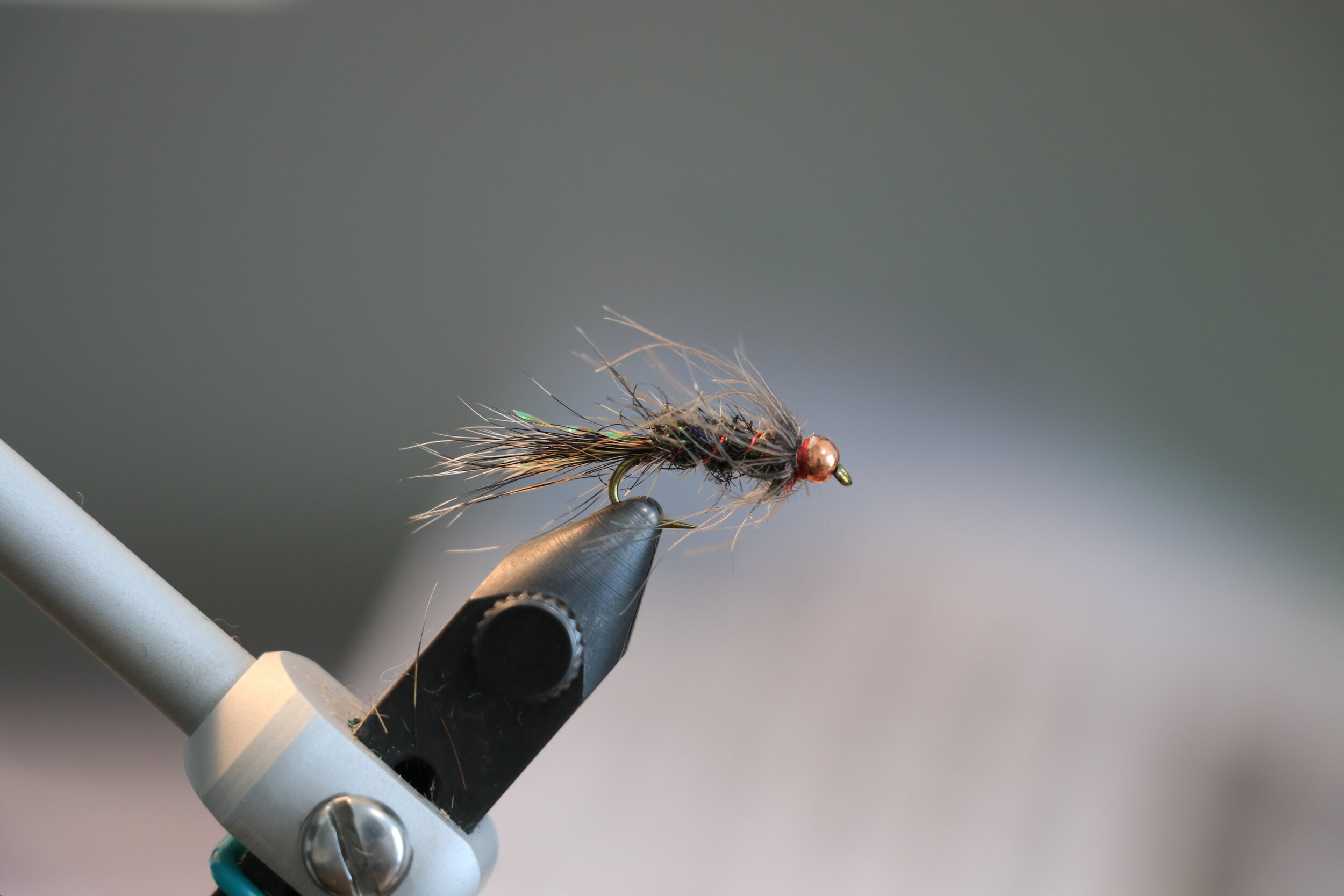This week's submission comes from Rob McConnell. Rob is the author of a great book entitled Fly Fishing The Sam - A Guidebook To Exploring The Waters Of Sam Houston National Forest. Rob's book is essential for anyone that plans on "fishing the Sam." Thanks to what I found in this book's pages, the Sam Houston Nation Forest is on my shortlist of places to fish on my next visit to Texas; if you're interested in learning more about the book, click the button below.
The Sam Jac Squirrel is a buggy little baitfish pattern that I feel could serve double duty as a large nymph as well. I love the fact that the originators of the fly used locally sourced materials for its creation. I have already tied up a few myself, and I can't wait to give them a try on my local waters! I am happy to announce Rob also provided a video of the pattern being tied for all those fly tiers who are clamoring for fly tying videos.
I will let Rob McConnell take it from here in his own words.
The San Jac Squirrel is a fly pattern that is effective in the creeks and bayous of Southeast Texas. The origin of the San Jac Squirrel can be traced back to a conversation that Kyle Hampton and I had while we hunted squirrels along the East Fork of the San Jacinto River. Kyle was in the process of reading one of Charlie Barr’s books on fly tying basics and in the interlude between the excited barking of our squirrel dog and the several shotgun blasts, we discussed fly tying projects and ideas.
We wanted to create a fly by using natural materials from the Pineywoods of Texas to catch the native creek-dwelling fish. We admired how the Brits used locally sourced partridge, starling, and mallard feathers to catch their local trout and since we were in the thick of squirrel season, naturally the illustrious squirrel would be the primary material for the fly.
Once our day of squirrel hunting had come to a close, all of the squirrels were cleaned and ready for the pot. We then decided to use our hunting “trophies” (the squirrel tails), to tie a couple of flies. Kyle decided to shave a dried squirrel hide with an electric razor to make squirrel dubbing. A blend of belly and back fur was gathered and to our delight, the squirrel dubbing worked beautifully.
The San Jac Squirrel has developed into a baitfish/bugger pattern that can be stripped or dead-drifted along the bottom of a stream bed. This fly is sure to tickle the tongue of many East Texas creek dwellers. It can be tied in a wide range of sizes, but we have the most success when it is tied in size 10. This size seems to work best for both panfish and bass.
Originators: Kyle Hampton and Rob McConnell
Pattern Recipe:
Hook – Size 10 Nymph (TMC3761)
Bead – 1/8” Cyclops Bead
Lead Wire - .020
Thread – 70 Denier Hot Pink or Red
Tail – Gray Squirrel or Fox Squirrel Tail & Krystal Flash Olive/Pearl
Rib – Small Ultra-Wire in Red
Body Dubbing –Squirrel Fur mixed with Orvis Ice Dubbing UV Black
Hackle – Coot Flank Feathers
Step by Step Tying Instructions:
Slide the gold tungsten bead onto the hook.
Make 5 to 10 wraps of lead wire behind the tungsten bead. Push the lead wire against the back of the bead.
Tie in your thread and make several wraps over the lead wire to secure it.
Wrap the thread down towards the hook point and stop in line with the barb.
Take a pinch of squirrel tail, about 1/6 to ¼ the diameter of a pencil. The length of the fibers should be the same length as the hook shank.
Tie in the squirrel tail.
Tie in 2 stands of Krystal Flash, one on either side of the squirrel tail and trim to desired length.
Tie in the small ultra-wire.
Form a dubbing loop at the base of the tail
Take a pinch of natural squirrel dubbing and a pinch of Orvis Ice Dubbing UV Black. Combine these dubbing clumps by pull them apart and place them back together again. Repeat this process until they are mixed to your satisfaction.
Slide the column of fur into your dubbing loop and spin the fibers.
Using the rotary feature on your vice, rotate the dubbing up the hook shank towards the eye. Secure the dubbing loop with a couple thread wraps.
Counter wrap the small ultra-wire, maintaining equal spacing of the wraps.
Secure the wire with several thread wraps.
Tie in a shabby ol’ coot flank feather just behind the tungsten bead. Make sure the feather fibers will lay back towards the bend of the hook.
Make several wraps with the feather and secure it with thread wraps.
Whip finish and apply head cement.
If your looking for squirrel tails to try this pattern, we have them in the shop in a variety of colors!


